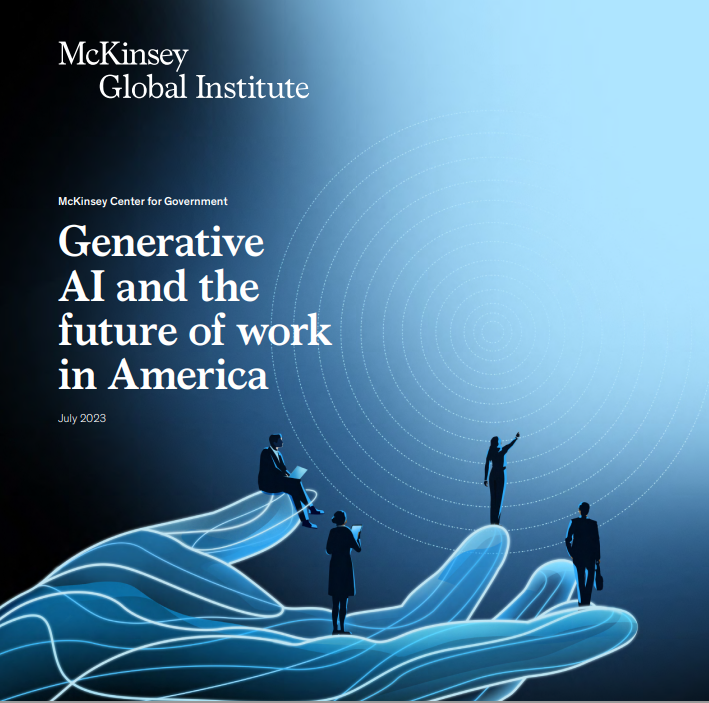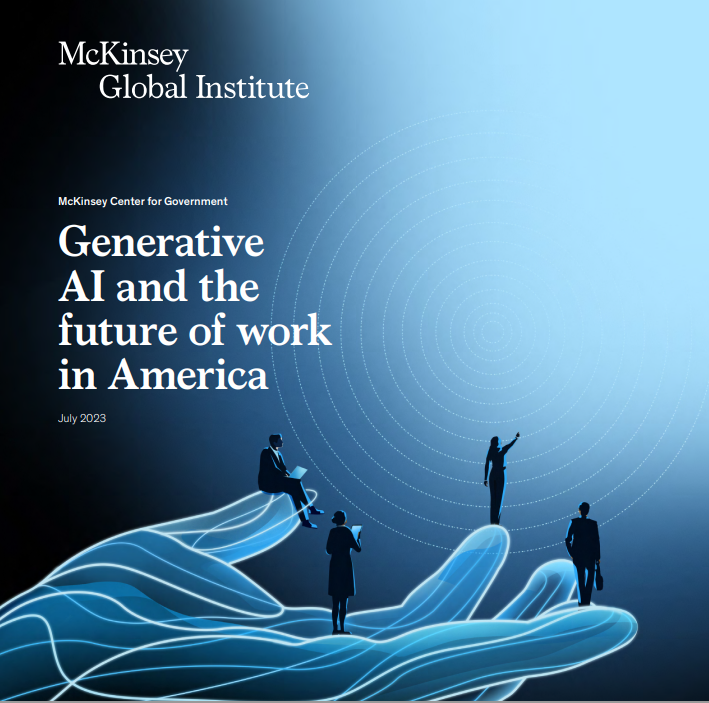Health Strategy Review
management, engineering and
technology review
Joaquim Cardoso MSc.
Chief Research and Strategy Officer (CRSO) —
for the Health Strategy Research
Chief Editor
for the Health Strategy Review
July 26, 2023
This is a “At a Glance” view of the report below:
Generative AI and the future of work in America
Mckinsey Global Institute (MGI)
Kweilin Ellingrud ; Saurabh Sanghvi ; Gurneet Singh ; Dandona Anu Madgavkar Michael; Chui Olivia ; White Paige Hasebe
Editor Lisa Renaud
July 2023
At a glance
During the pandemic (2019–22), the US labor market saw 8.6 million occupational shifts, 50 percent more than in the previous three-year period.
- Most involved people leaving food services, in-person sales, and office support for different occupations.
By 2030, activities that account for up to 30 percent of hours currently worked across the US economy could be automated — a trend accelerated by generative AI.
However, we see generative AI enhancing the way STEM, creative, and business and legal professionals work rather than eliminating a significant number of jobs outright.
- Automation’s biggest effects are likely to hit other job categories. Office support, customer service, and food service employment could continue to decline.
Federal investment to address climate and infrastructure, as well as structural shifts, will also alter labor demand.
- The net-zero transition will shift employment away from oil, gas, and automotive manufacturing…
- … and into green industries for a modest net gain in employment.
- Infrastructure projects will increase demand in construction, which is already short almost 400,000 workers today.
We also see increased demand for healthcare workers as the population ages, plus gains in transportation services due to e-commerce.
An additional 12 million occupational transitions may be needed by 2030.
- As people leave shrinking occupations, the economy could reweight toward higher-wage jobs.
- Workers in lower-wage jobs are up to 14 times more likely to need to change occupations than those in highest-wage positions, and most will need additional skills to do so successfully.
- Women are 1.5 times more likely to need to move into new occupations than men.
The United States will need workforce development on a far larger scale as well as more expansive hiring approaches from employers.
- Employers will need to hire for skills and competencies rather than credentials, recruit from overlooked populations (such as rural workers and people with disabilities),
- … and deliver training that keeps pace with their evolving needs.
Originally published at https://www.mckinsey.com













